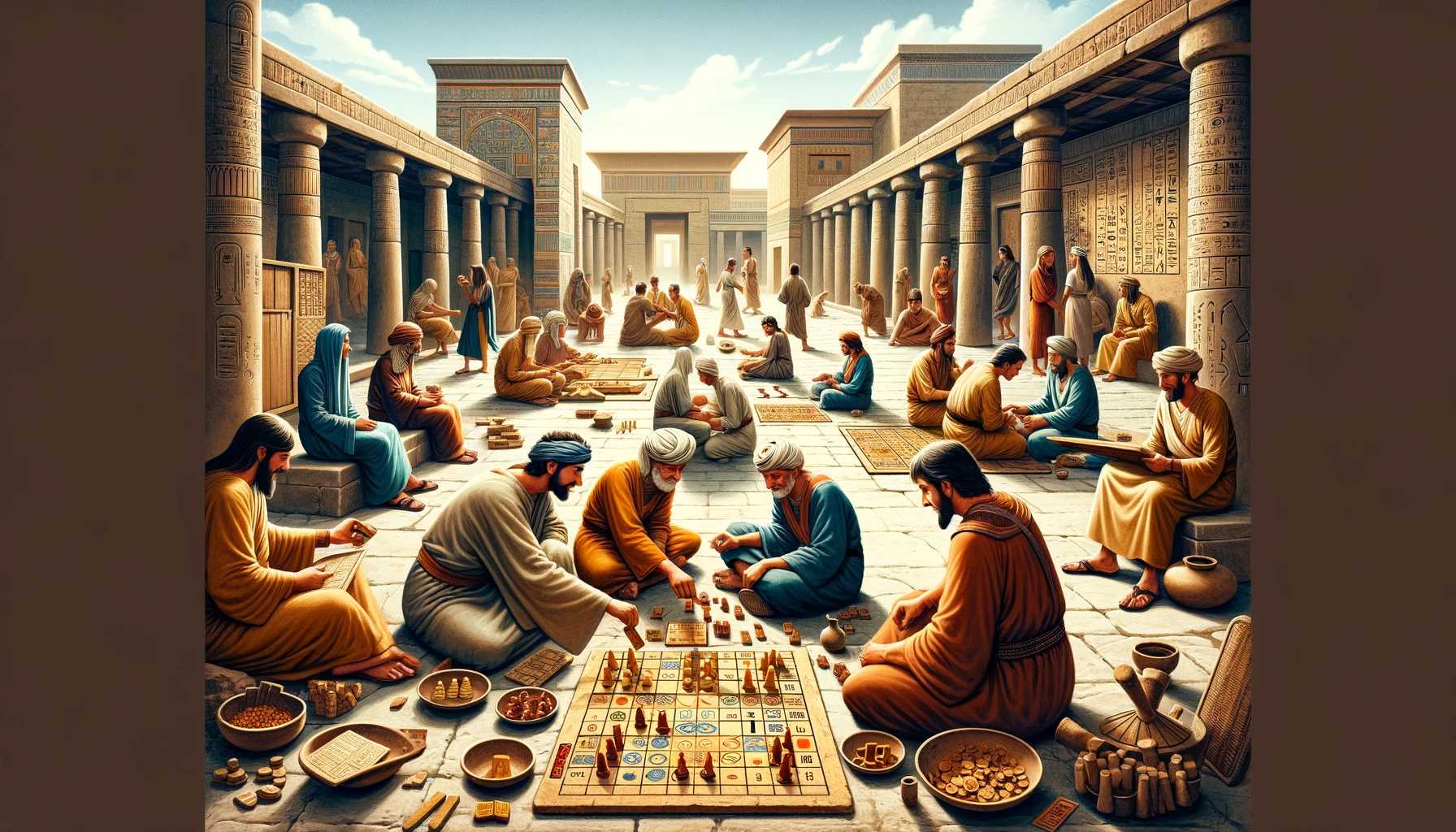History has it that games and human are closely joined or disentangled. In past years board games have gone through an expansion of growth. The inchoate interest went as far as inspiring Will Wheaton and Felicia Day to start a popular series on Youtube, called the Table Top. This series lead a lot of celebrities to be against each other and amass several hundred thousand views per video.
How did something so medieval become so popular? So, where did it all start?
THE FIRST BOARD GAME (5000 BC)
Most people don’t know that we had board games before we had written language. The very game enjoyed by man is DICE. A piece that’s most essential in board games and the basis of humanity oldest games.
However 49 pieces of small carved painted mound stones where found at the 5,000 year old Başur Hӧyϋk burial in southeast Turkey. This were the first gaming pieces ever found. Though a similar piece was found in Syria and Iraq pointing to board games originated in the Fertile Crescent. The Fertile Crescent is comprised of regions around the Nile, the River Euphrates in the Middle East, and Tigris. This same region invented papyrus, booze, calendars and breathe mints, all these are required when planning your game night.
Mesopotamian dice were created from varieties of materials including carved knuckles bones, wood, painted stones and turtled shells. Currently dice were made from large variety of materials like: copper, glass, ivory, brass and marble.
Looking back to the Roman Era dice look similarly to the six-sided dice currently in use in this present time.
BOARD GAME AS PASTIME FOR THE ELITE (3500 BC)
Board game are competitive games played on the floor, the board or on the ground. This game became as pastimes for the elite, when the Roman Empire spread it throughout Europe, according to recent study.
Senet is an ancient board game which became popular among the pharaohs in Ancient Egypt. This board game is featured and illustrated in several Egyptian tombs. In 1550-1077 BC it became a talisman for the journey of the dead in New Egypt Kingdom.
Ancient Egyptian believes strongly in “Fate”. They strongly believe that luck in this game Senet is tied to fate. The Senet board is a grid of 30-sqaures, arranged in three rows of ten with two sets of pawns. Accordingly Senet boards were placed in the grave with other important objects for the journey through the afterlife. The actual rules for this game have been adopted by companies which are set for sale in our current market.
Archaeological records states that; board games didn’t get to Britain until the very end of the 1st century B.C. from newly conquered Gaul. Early findings explains the significant of early gaming equipment in Britain, they say, it came from Doctor’s Grave of Stanway in Colchester, England. Dated to 40-50 A.D., containing a gaming board with 26 glass counters, apparently laid out as if for paly. Gaul was a region comprises of present-day-France, Belgium, most of Switzerland and other areas.
The early board games were diplomatic gifts to signify status, this playing pieces belong to elite and privileged people. During this era board games are not played by everyone.
Hall said the world oldest known board games could be “The Royal Game Ur,” also known as the Game of Twenty Square’s. It was discovered in the Royal Tomb of Ur in Iraq. It was said that no one knows the earliest rules of this games, so it was thought to have been a predecessor to today’s backgammon. As this game spread abroad, it name reveals a connection to the Roman Empire.
Another early Egyptian board game called Mehen, featured lion-shaped pieces and marbles. It was early proved that they comes from the Pre-dynastic period (3600-3200 BC), it was given the accolades of the oldest board game in the word. Rules on how to play this game has not been found, what we know is that the game represent a deity Mehen. The Sun Cult envisioned the god Mehen as a huge serpent who wrapped the sun God Re in its coils.
There are important features to note on the board game. For example, a goose head, a large trapezium section or a small turtle’s head protrusion.
The game board mimics this. The game and the god became entwine. It became one with the serpent deity in thought and in texts. An archaic Egyptian Historian, Tim Kendall, believed it possible to know if this deity was inspired by the game or inspired by an already existing mythology.
An important aspect of the board game shows how some of the spaces are hatched. It is not know to occur on any other surviving boards making it interesting that these is also part of the game, perhaps representing safe spaces or oracles that needed to be passed.
